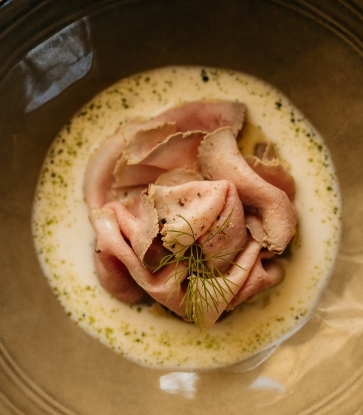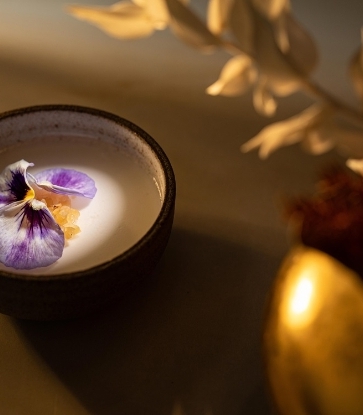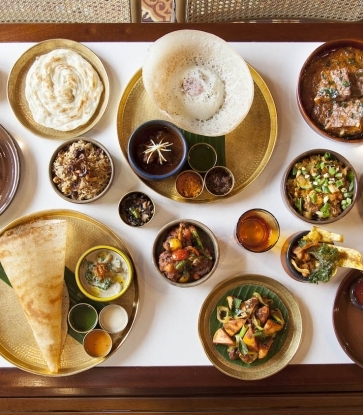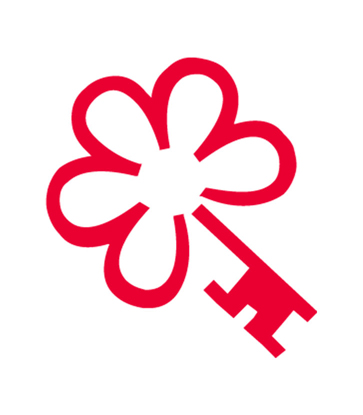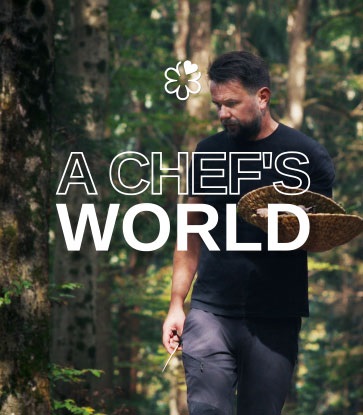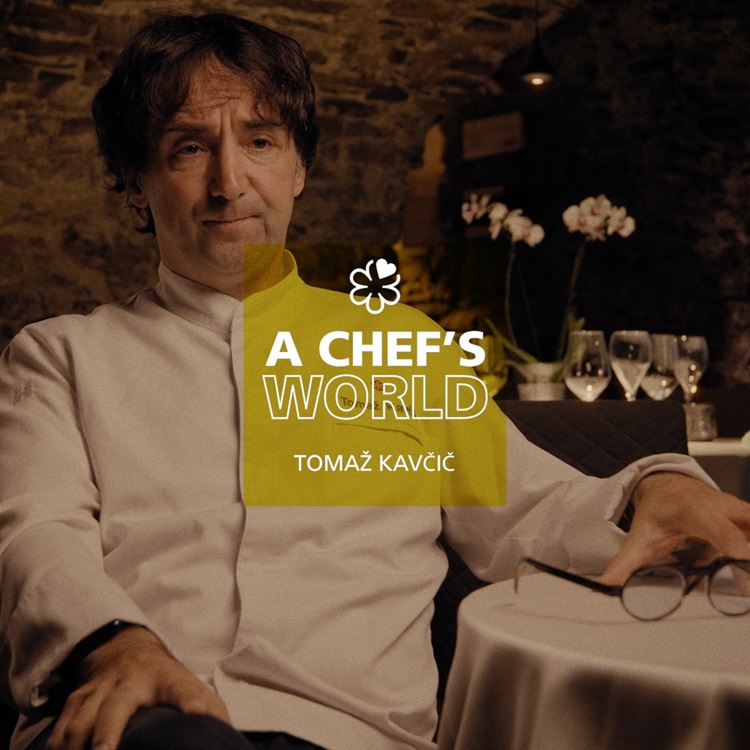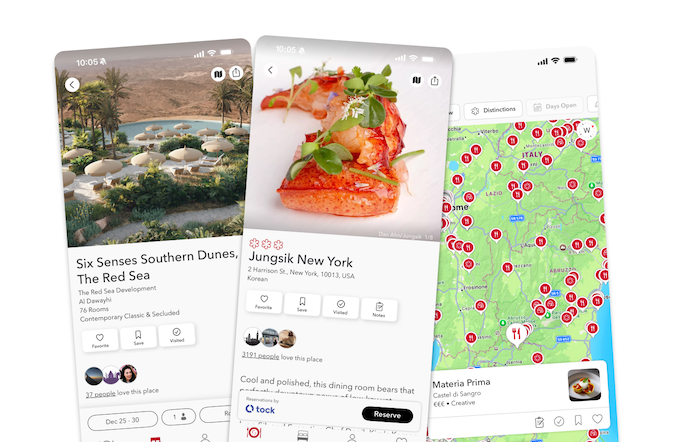The former is more visited by tourists, with its fortified rock overlooking the water, while the latter, situated in the heart of the Triglav National Park (one of the oldest in Europe), is larger and more entwined with its surrounding natural scenery. Lake Bohinj is Slovenia’s largest natural lake, nestled amid unspoilt mountain pastures and stunning Alpine peaks. Here, in Stara Fužina, the Majerca Boutique Hotel and its restaurant occupy a modern building created by Slovenian designers and architects in which wood is one of the main materials used. The hotel balconies boast views of the lake, framed by the majestic mountains of the Gorenjska region.

Inside this warm and welcoming hotel which opened four years ago, you’ll find a spacious dining room with large picture windows looking out at the summer terrace, hotel garden and surrounding meadows. Chef Timi Rožič has been at the helm in the kitchen here since 2022. He grew up in the region and as a child played with his friends in this building, which at the time was home to a leather factory owned by his friends’ parents. After his studies, he moved to Ljubljana and from there, driven by a passion for food inherited from his grandparents, he travelled to countries of former united republic of Yougoslavia, all around Europe and fell in love with travels around Asia and decided to dedicate his life to cooking. He worked in restaurants such as Ateleje (now Aftr) and Strelec in the Slovenian capital, then in a butcher’s to learn the secrets of the trade (meat is his passion). He then opened Zanoodle, a small bistro inspired by Asian cuisine which is still in business, although it is no longer managed by Rožič, and after this, he chose to return to his native region, to this lakeshore and the woods where he loves to go hunting.

This rediscovery of his homeland forms the beating heart of his cuisine, in which he succeeds in showcasing the local area while remaining open to influences from elsewhere and combining flavours from around the world. The chef’s roots, inspiration and identity are all intricately linked to Bohinj, so that this heritage of experiences, memories and nature has a major influence on his cuisine. Rožič’s dishes focus on protein-rich ingredients such as meat, game and fish from the lake, complemented with vegetables and enhanced by flavours and ingredients inspired by his history and his travels. The same single menu is served for lunch and dinner, with the addition of grilled dishes in summer all prepared in the restaurant’s garden kitchen. “Slovenia is a small country”, says the chef, “but one that boasts superb local produce, which in our region includes potatoes, carrots, cabbage, trout and game. However, we don’t want to restrict ourselves exclusively to these ingredients. If you climb our mountains (Southern Bohinj ridge), you can see the sea and so for us, local produce also includes fish and seafood”.

Regional ingredients always take centre stage here: at Majerca, turnips and cabbage are fermented, vinegar is made from apples and pears, and although they inevitably serve plenty of the potatoes grown abundantly in the region, they don’t limit themselves to these. As previously mentioned, meat features widely on the menu (beef, veal, duck, chicken and game such as venison and chamois), all of which is sourced from small-scale local producers. And now, in order to showcase these ingredients and the work of local people to the full, Majerca team is opening a small restaurant in Kamnje, not far from the hotel, which will focus on traditional dishes and will also be home to a workshop for meat processing and the production of cured hams (charcuterie in general). In addition, for the past couple of years a municipal project has focused on growing different types of vegetables which are then used in Majerca’s restaurant, where the chef always chooses honey, cheeses, butter and ricotta made by producers who have two or three cows that they put out to pasture in the summer months. “We try to buy as much as possible from them”, explains the chef “to help the system”. Dishes on the menu include venison (red deer) tartare, sweetcorn soup with garlic-infused oil, roast cabbage with fennel and orange, and duck served with cauliflower, kohlrabi and raspberries.

The Triangel Boutique Hotel is situated in Gozd Martuljek in the Kranjska Gora area, not far from the border with Italy and the Friuli-Venezia Giulia region and about an hour’s drive from Lake Bohinj. This boutique hotel stands in the Upper Sava valley within the Triglav National Park, nestled at the foot of the majestic Martuljek mountains group which form part of the Julian Alps. Tourism arrived in this valley in the late 19C with the creation of the railway, although at the time there wasn’t a station at Gozd Martuljek. It was not until the 1930s that a private individual decided to invest in the region by creating this guesthouse, which was denationalised after the Second World War and was finally returned to its original owners in 2000.

The building was brought back to life three years ago, when a new owner brought a new investment and created a hotel with eleven guestrooms, three apartments and one studio-apartment, as well as a restaurant run by chef Jon Zupan. Here, the cuisine focuses on a gastronomic experience that looks to the region and its culinary traditions while still paying careful attention to the requirements of the hotel’s international clientele. Originally from the area, Jon Zupan has fifteen years’ experience working with chef Uroš Štefelin from the Hiša Linhart restaurant in Radovljica, with whom he began to research Slovenia’s oldest recipes.

He has been at the helm at the Triangel restaurant for two years, where he continues with his search for heritage ingredients and traditions and works as much as possible with local produce. For example, Mavželj was once prepared using parts of the pig which are not normally used today. Here, Zupan makes the dish with top-quality pork to which he adds potatoes, truffles, seasonal vegetables and Mohant cheese. Other traditional “peasant” dishes include a beef salad which Jan Zupan calls Zgornjesavski Esihflaš, and a veal stew known as Telečja Obara. After all, the typical cuisine of the Gorenjska region in which the restaurant is situated was once based on a subsistence economy which respected the laws of nature – local inhabitants had to survive the winter on whatever they had sown in spring, cultivated throughout the summer and harvested in autumn.

Some of the dishes served at Triangel, where the wine list also focuses on the best of Slovenia, have their roots in this traditional cuisine in which pride of place is given to zero-mile cheese, butter, ricotta and yoghurt, locally raised organic meat, fish from Lake Bohinj, and local apples and potatoes.
The same is true of breakfast, which is served on the ground floor in the same spacious dining room with its open-view kitchen. In addition to more classic breakfast options, guests can also try traditional dishes such as potato or lentil salad, local jams, butter and eggs, typical spoon desserts made from milk and millet, and tarts with apples, plums or Tepka pears from the Bled Upper Carniola region.

Hero image: Cveto Sonc - Triangel




